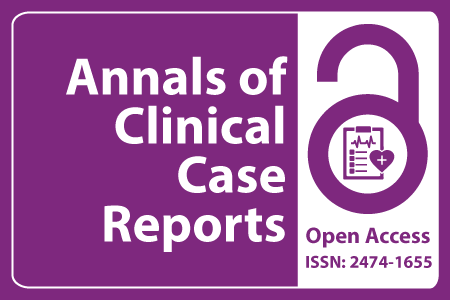
Journal Basic Info
- Impact Factor: 1.809**
- H-Index: 6
- ISSN: 2474-1655
- DOI: 10.25107/2474-1655
Major Scope
- Trauma
- Obstetrics and Gynecology
- Sleep Medicine and Disorders
- Emergency Medicine and Critical Care
- Urology Cases
- Gastroenterology
- Ophthalmology
- Child Birth
Abstract
Citation: Ann Clin Case Rep. 2022;7(1):2287.DOI: 10.25107/2474-1655.2287
Effects of Lumacaftor/Ivacaftor Therapy on Exercise Endurance and Inspiratory Capacity in Cystic Fibrosis
Daniela Savi1*, Andrea Gramegna2,3, Marco Vicenzi4,5, Marcello Di Paolo1, Irene Rota4, Carlotta Biglia6, Barbara Messore6, Paolo Palange1 and Francesco Blasi2,3
1Department of Public Health and Infectious Diseases, Sapienza University of Rome, Italy
2Department of Pathophysiology and Transplantation, University of Milan, Italy
3Respiratory Unit and Cystic Fibrosis Adult Center, Fondazione IRCCS Ca' Granda Ospedale Maggiore Policlinico, Italy
4Fondazione IRCCS Ca’ Granda Ospedale Maggiore Policlinico, Internal Medicine University of Milan, Italy
5Department of Clinical Sciences and Community Health, Dyspnea Lab, University of Milan, Italy
6Department of Pulmonology, Adult Cystic Fibrosis Center, Azienda Ospedaliera Universitaria San Luigi Gonzaga, Italy
*Correspondance to: Daniela Savi
PDF Full Text Research Article | Open Access
Abstract:
Rationale: Since the combination of the corrector Lumacaftor (LUM) with the potentiator Ivacaftor (IVA) has been approved, no reports about the long-term effects of CFTR modulators on exercise endurance and exertional symptoms are available. Methods: We performed a symptom-limited constant load cycling test with assessments of inspiratory capacity, dyspnea and leg discomfort ratings pre- and post 6 months initiation of LUM/ IVA in three patients with Cystic Fibrosis (CF). Results: Exercise endurance time improved by +87% in patient 1, +52% in patient 2 and +23% in patient 3. There was an improvement in inspiratory capacity prior to exercise (+17%, +16%, +6% in patient 1, patient 2 and patient 3, respectively) and at end-exercise (+4%, +23%, +10% in patient 1, patient 2 and patient 3, respectively), associated with improvements in exertional dyspnea and leg discomfort. Conclusion: Endurance time, inspiratory capacity and exertional symptoms improved after 6 months of LUM/IVA.
Keywords:
Cite the Article:
Savi D, Gramegna A, Vicenzi M, Di Paolo M, Rota I, Biglia C, et al. Effects of Lumacaftor/Ivacaftor Therapy on Exercise Endurance and Inspiratory Capacity in Cystic Fibrosis. Ann Clin Case Rep. 2022; 7: 2287..













